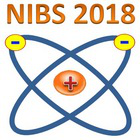Speaker
Dr
Marco Cavenago
(INFN-LNL)
Description
The complexity of the negative ion sheath is immediately evident, for several reasons:
the electrons are magnetized, so that a collisionless model is clearly faulty and overoptimistic, since it neglect electron extraction (an undesired effect). As in other sheath models, the kinetic effects are important, so that the self-consistent electric potential is naturally determined by an integral equation. Even if numerical model to the state of arts allows to treat important 2D and perhaps 3D effects, they are inconsistent with the actual size of the Debye length: reliability of modified vacuum permittivity $\epsilon_0$ models is often invoked in the literature; moreover, large programming effort is needed for parallelization and months are a typical run time. On the other hand theoretical model is limited to 1D variation of the electric potential $\phi(z)$ with $z$ the extraction axis, and of the magnetic field $B_x(z)$; nevertheless it worthile to develop because it can give insight on the critical physics to possibly verify in simulation and on the design parameters. In this paper we complete the investigation on the singular effects of the Coulomb collision and discuss representation of wall collision, in kinetic and fluid models; for typical source parameters, the electron-neutral collisions (included in the theoretical model) result not much larger than the former, so motivating this analysis. From practical point, the need of a comparatively larger extraction voltage (with respect to the unmagnetized case for H$^-$ only) affecting source bias current is emerging.
Primary author
Dr
Marco Cavenago
(INFN-LNL)

